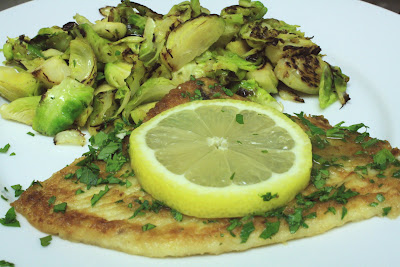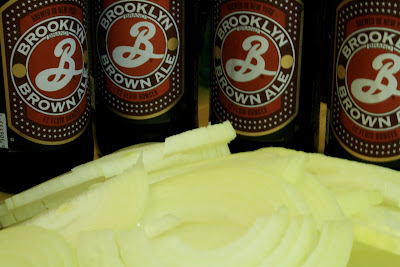sunday supper: sick of short ribs yet?
After last week's meat fiesta with the cassoulet, I was actually not going to make a big meat dish this weekend, but then I found short ribs on sale and I just couldn't turn away. Short ribs. On sale. I swear that I'm planning a vegetarian chili next. We may be meated out. But at least this time around I tried a recipe I've never done before - John Besh's Zinfandel Braised Short Ribs.
The verdict is that these ribs were intensely flavorful, but admittedly this will not become my new go-to short ribs recipe, I am still very partial to my simpler red wine recipe and to the beer braise recipe. Part of my issue with this one is that is was quite sweet, and really lacking in acid. Between the Zinfandel, the porcini mushrooms, and the carrots, all of the major flavors were rich, but nothing had bite.
For me, short ribs are the most delicious, beefy, decadent cut of meat, and I just don't think they need such deep intense flavors to be great. Let the beefiness really shine through and keep things simple. But of course, these were still delicious, as any well made short ribs will be. And yes, I served them over rice. Again. Recipe after the jump:
JOHN BESH'S ZINFANDEL BRAISED BEEF SHORT RIBS
Serves: 4
Prep time: 30 minutes
Cooking time: About two hours (with little labor)
4 lbs beef short ribs, cut flanken style (across the bone) or English style (parallel to the bone). Flanken are easier to deal with but slightly more fatty.
Coarse salt and black pepper
3 cups zinfandel
1/2 cup sugar
6 oz canned chopped tomatoes
2 cups beef broth
1 tbsp minced garlic
3 sprigs fresh thyme, picked off stem
2 bay leaves
3 oz canola oil
1 large onion, diced (2 cups)
2 medium carrots, diced (1/2 cup)
2 stalks celery, diced (1/2 cup)
2 oz dried mushrooms, preferably porcini
1. Season short ribs with salt and pepper; be rather generous. In a mixing bowl, whisk together zinfandel, sugar, tomatoes, beef broth, garlic, thyme, bay leaves, and a pinch of salt. Pour wine mixture over short ribs and set in fridge to marinate for at least an hour, or up to 12.
2. Pour canola oil into a heavy pot or Dutch oven (at least 5 quarts) and place over high heat. When oil is hot, working in small batches, brown the meat. Turn each piece to brown on all sides before removing from the pot.
Tip: A sturdy pot that conducts heat well has a lot to do with the success of this dish. Get yourself a cast-iron pot. It'll outlast you.
3. When all beef is browned and removed from pot, add onion, carrots, and celery, allowing onion to cook until browned, about 10 minutes, stirring frequently.
4. Return beef to the pot along with wine mixture. Allow wine to come to a boil before reducing heat, skimming fat from surface.
5. After simmering for several minutes, add mushrooms. Cover and simmer over very low heat until meat is fork tender and nearly falling off the bone, about 1 1/2 to 2 hours.
6. Once the beef has cooked, remove from pot and keep warm. Turn up heat and reduce the pot liquids until thickened, about 10 minutes. Season with salt and pepper to taste.
7. Transfer ribs to four shallow bowls, spooning liquid over top.




























